Embed presentation
Downloaded 57 times
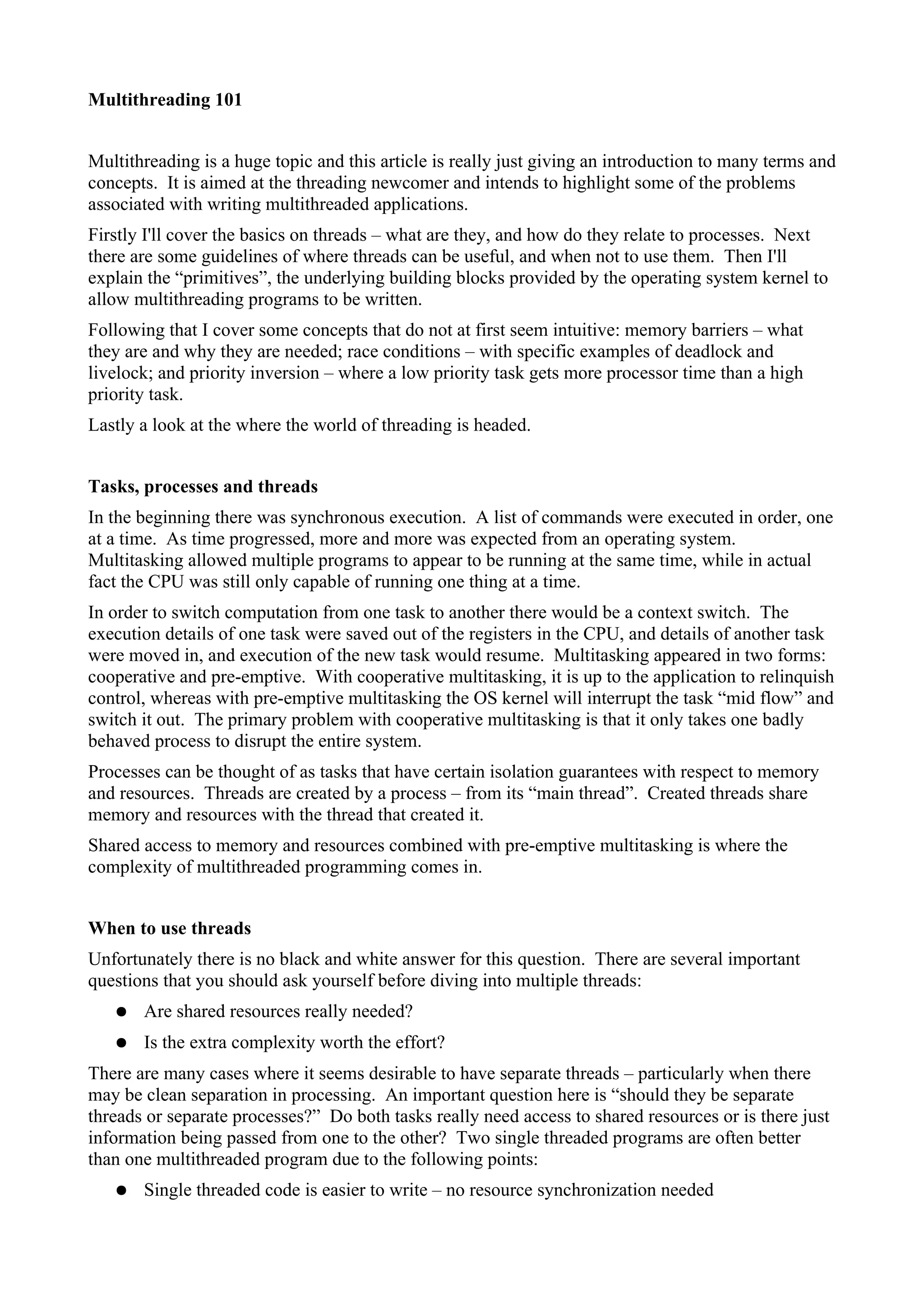
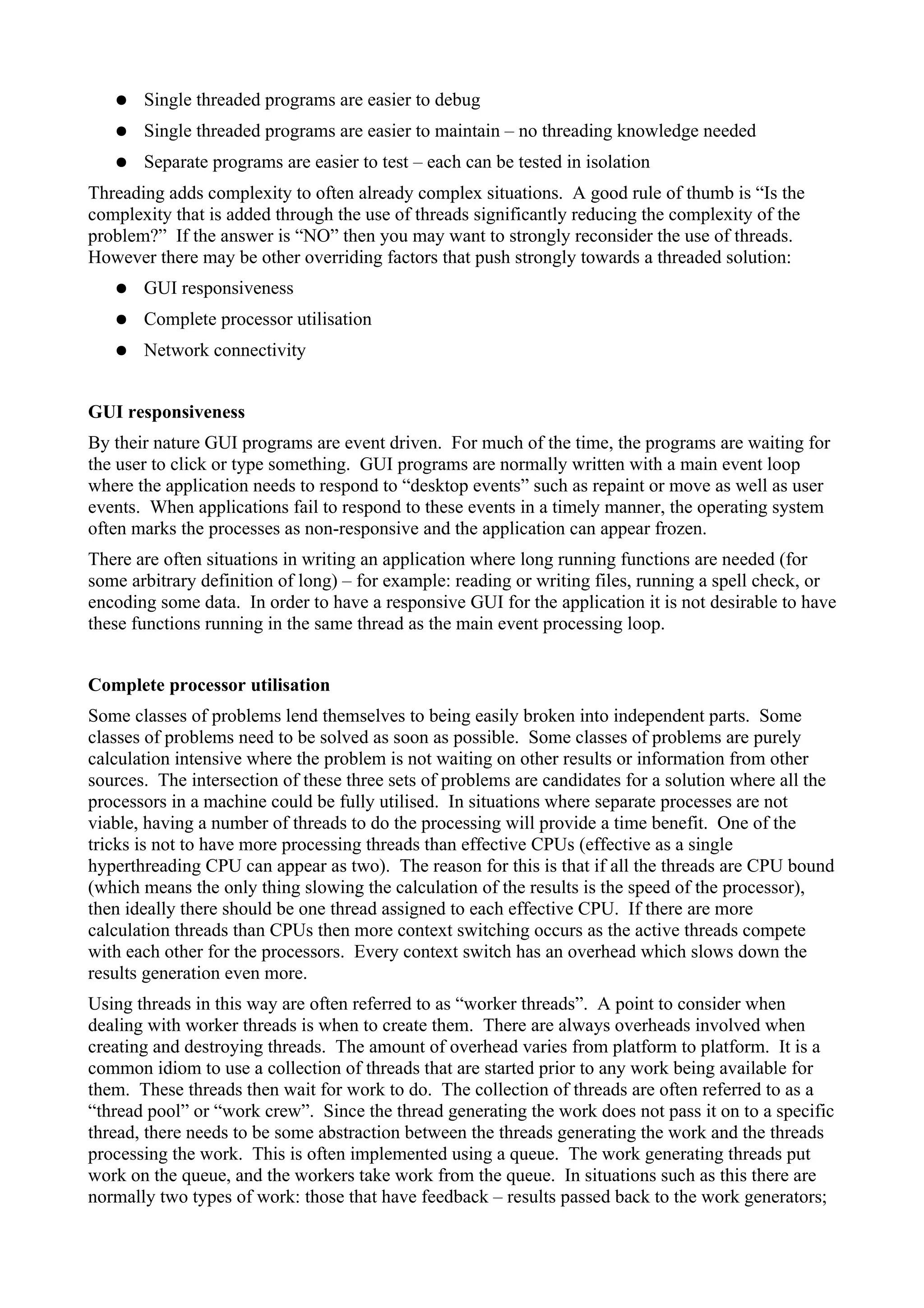
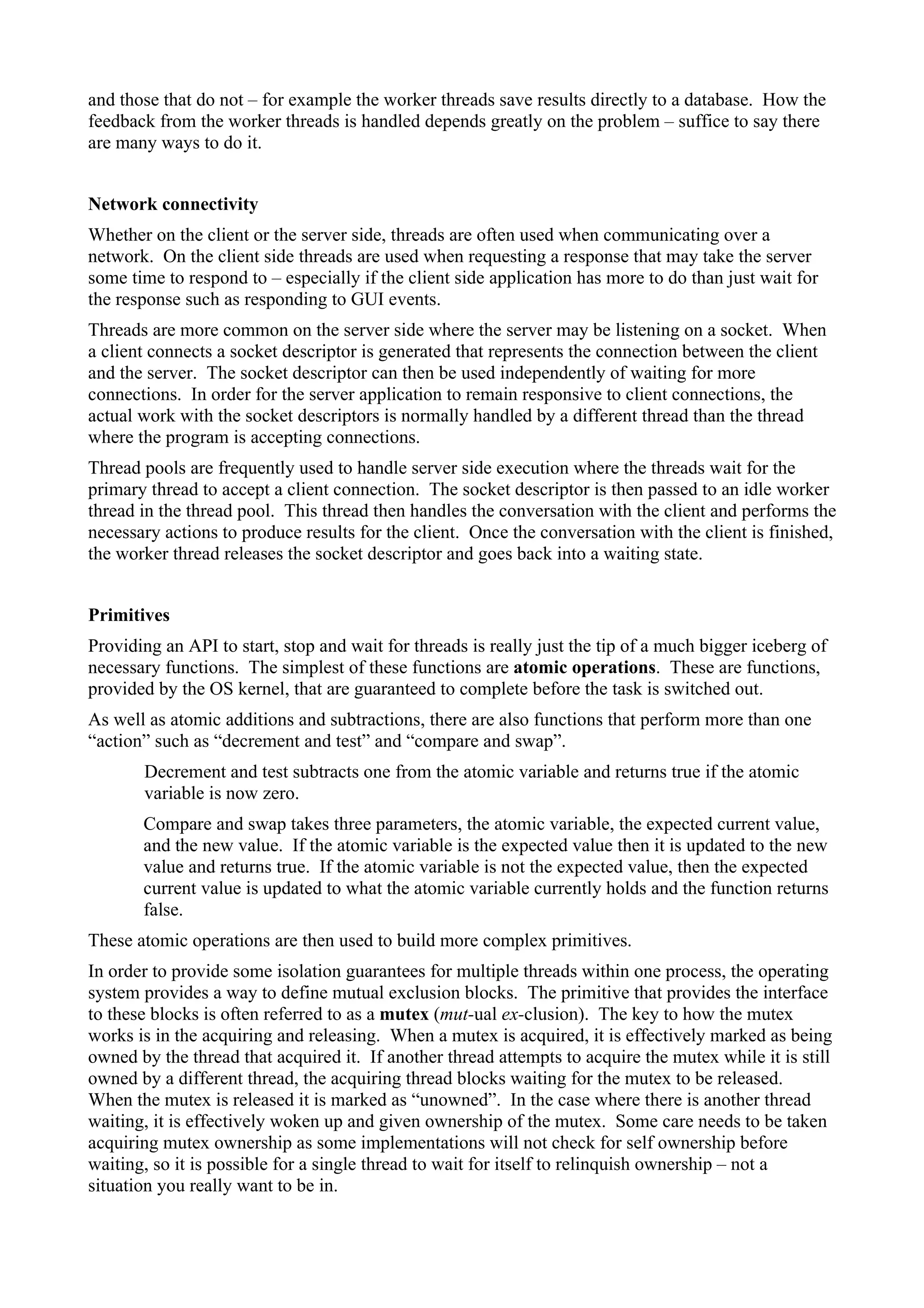
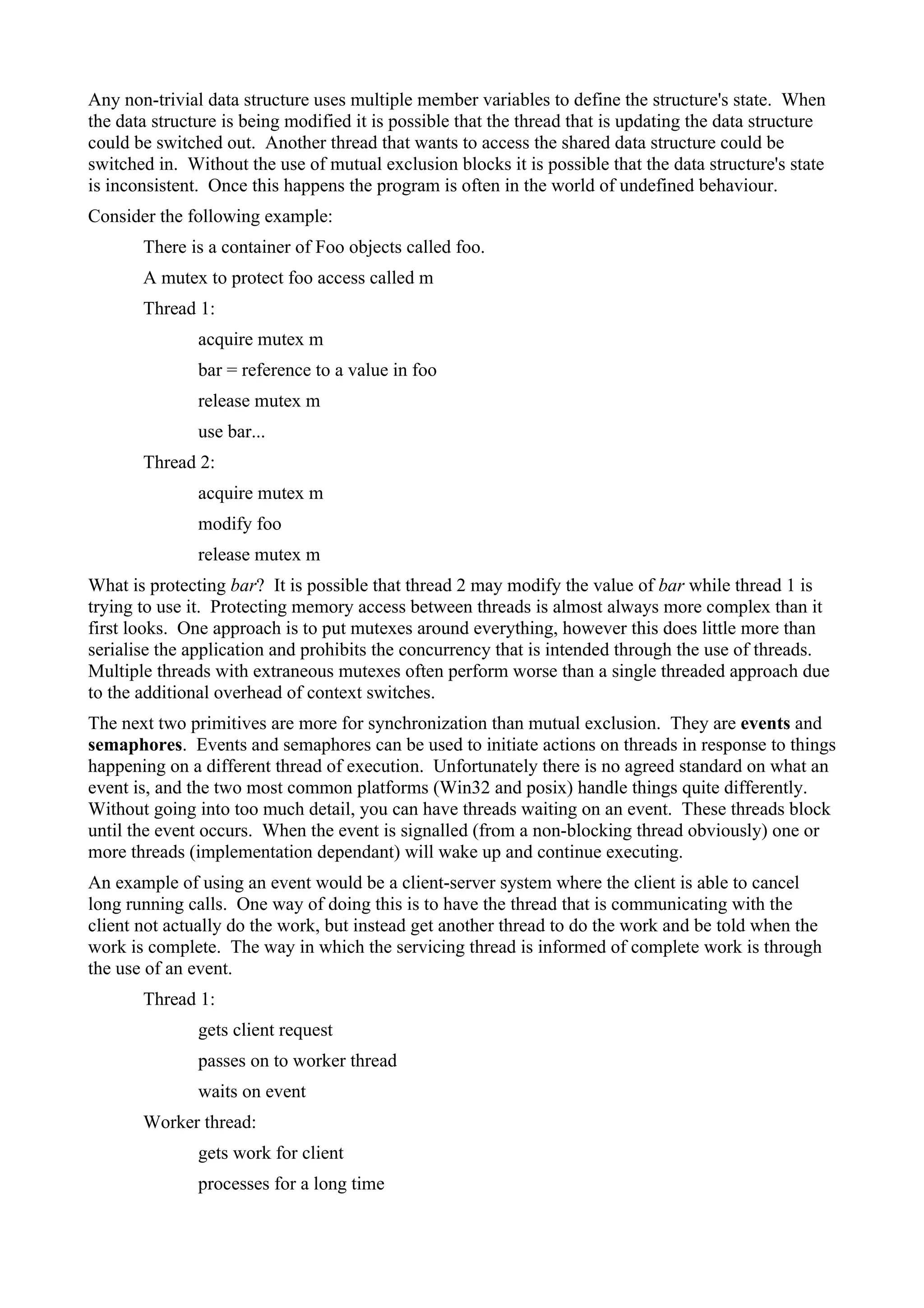
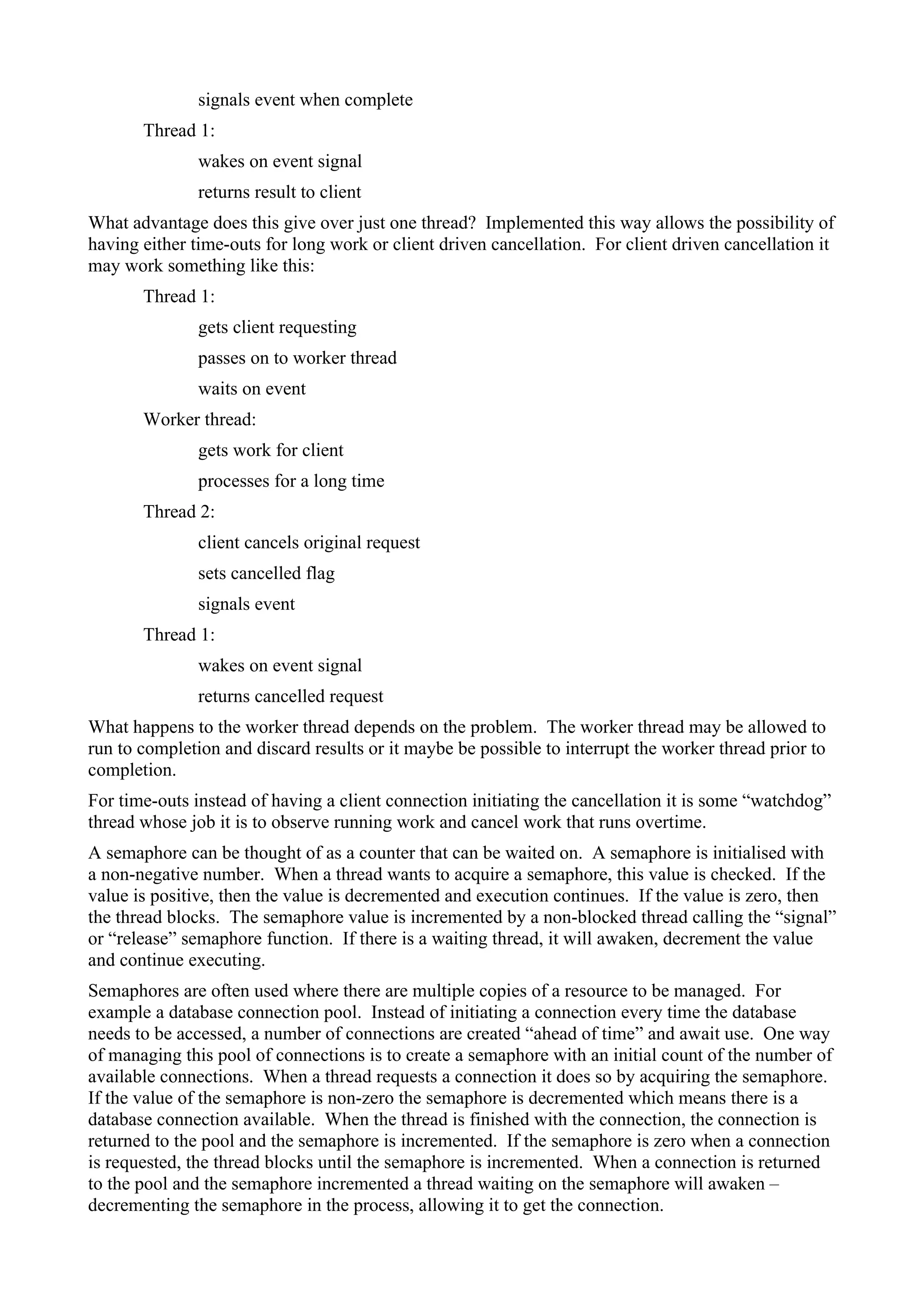
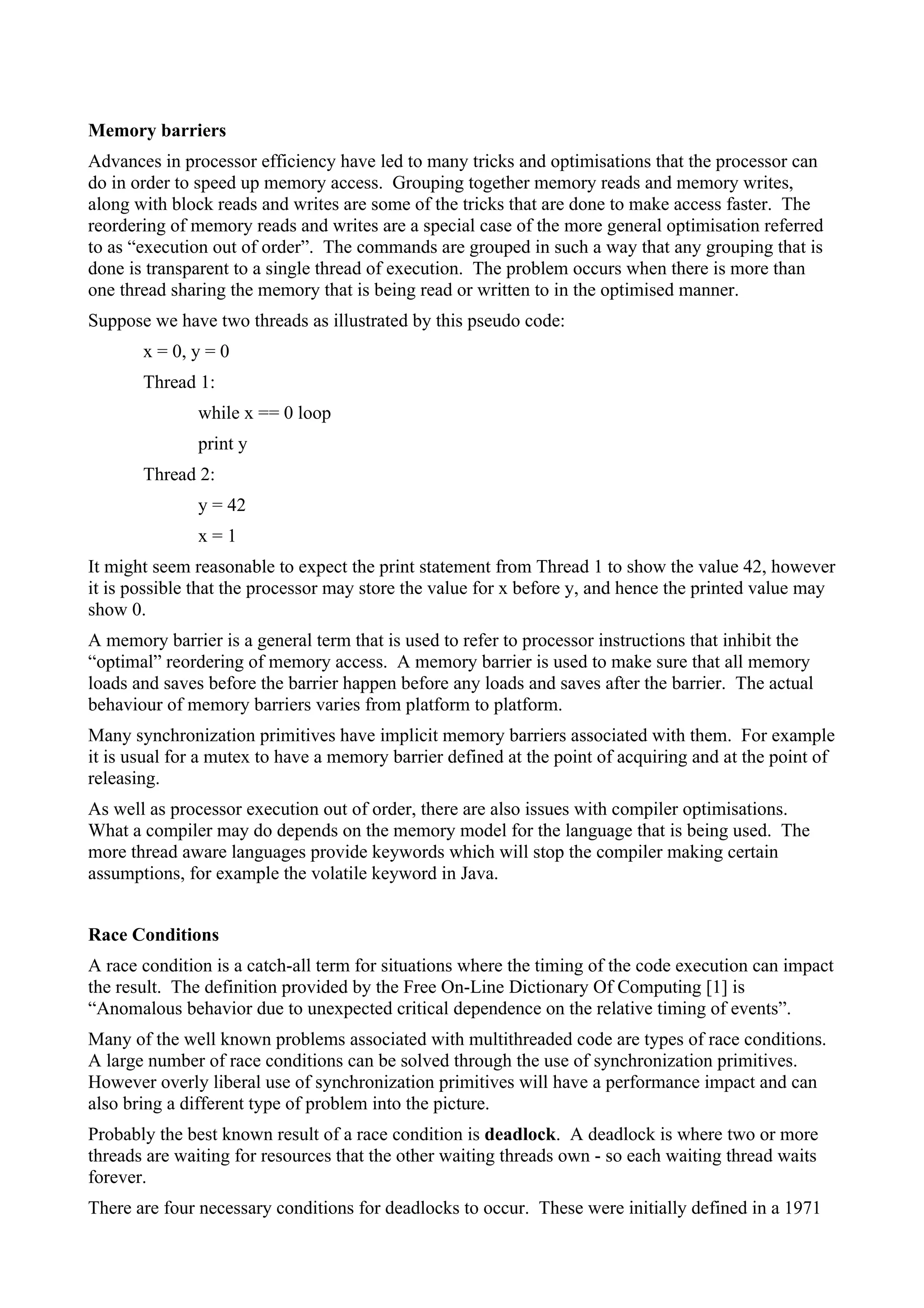
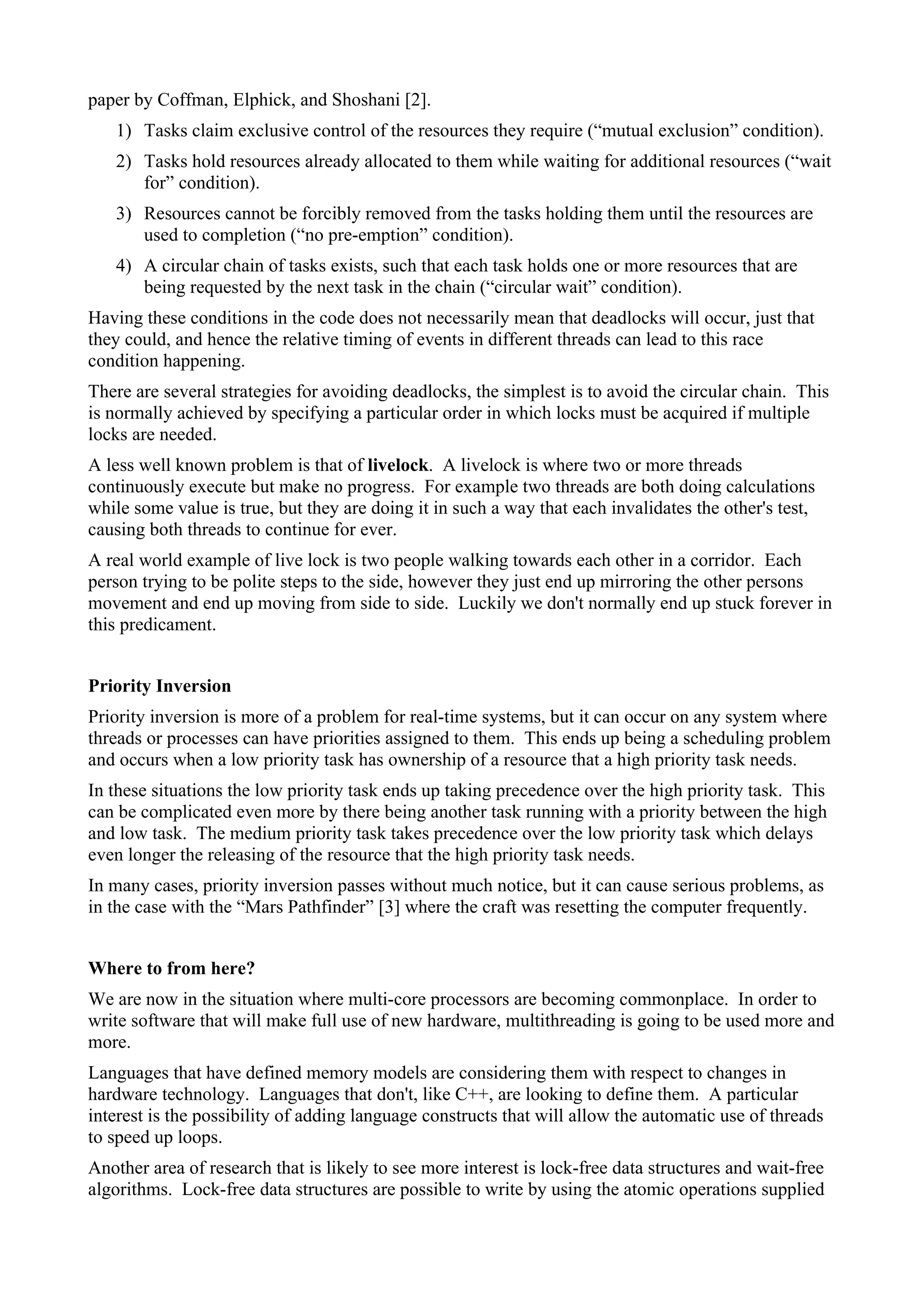


This document serves as an introductory guide to multithreading concepts and practices for beginners, discussing fundamental aspects of threads, processes, and potential complexities in multithreaded programming. It covers when to utilize threads, the importance of GUI responsiveness, and the efficient use of worker threads, alongside techniques for managing shared resources and avoiding issues such as race conditions and deadlocks. Additionally, the document explains synchronization primitives like mutexes, semaphores, and memory barriers, providing insights into their significance in ensuring correct multithreaded operation.







